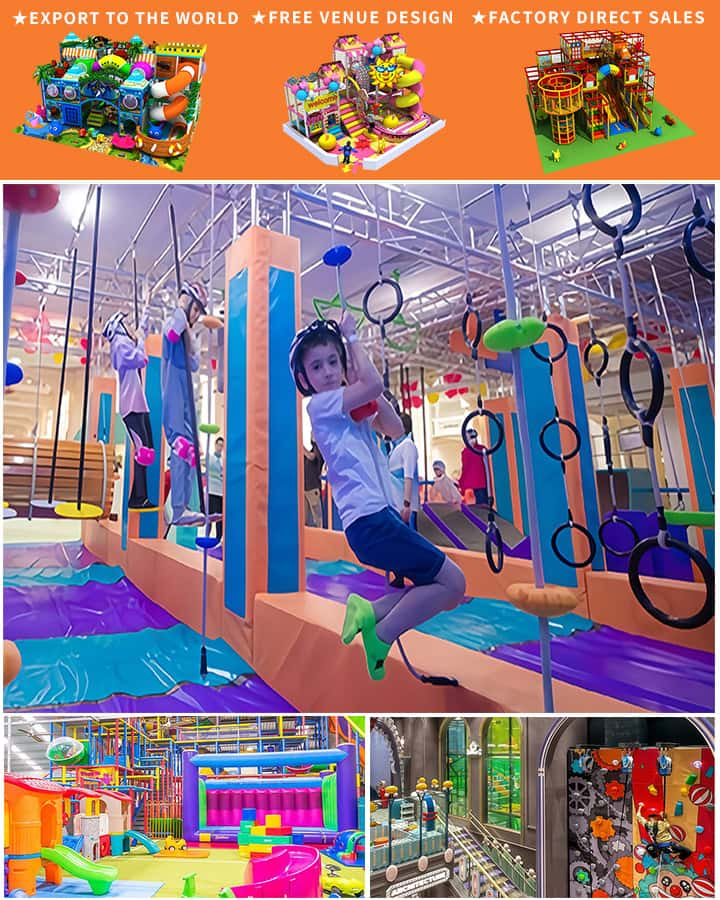Starting an indoor playground can be an exciting venture, promising fun for children, parents, and business owners alike. However, it comes with its own set of financial challenges and benefits that aspiring entrepreneurs must consider meticulously. This article delves into the various costs associated with opening an indoor playground and explores the potential returns on investment.
Initial Setup Costs
One of the first steps in establishing an indoor playground is securing a suitable location. Renting or purchasing property in a prime area can vary significantly based on location, size, and local market conditions. For example, a space in a bustling commercial district might cost substantially more than one in a suburban area.
Once the venue is secured, the next significant expense is the construction and design of the play area. Custom-built structures like ball pits, climbing frames, slides, and interactive games can be quite costly. Safety features such as soft flooring and padded corners are essential but add to the initial setup costs. Engaging a professional designer to create an appealing and safe environment can also escalate expenses.
Licensing and Permits
 Before opening the doors, obtaining necessary licenses and permits is crucial. These can include general business licenses, health department permits, fire safety inspections, and specific childcare regulations depending on the region. These legal requirements ensure compliance with local laws and safeguard the wellbeing of young patrons, albeit at an added cost.
Before opening the doors, obtaining necessary licenses and permits is crucial. These can include general business licenses, health department permits, fire safety inspections, and specific childcare regulations depending on the region. These legal requirements ensure compliance with local laws and safeguard the wellbeing of young patrons, albeit at an added cost.
Equipment and Supplies
Investing in high-quality, durable equipment is vital for safety and longevity. Suppliers of specialized indoor playground equipment can provide packages that include everything from modular play structures to themed installations, but these come at a premium price. Maintenance supplies, such as cleaning materials and replacement parts, should also be budgeted for ongoing operational needs.
Marketing and Staffing
Effective marketing is essential to attract customers and build brand awareness. Advertising through social media, local events, and partnerships with schools or community centers can drive initial traffic but requires a marketing budget. Additionally, hiring trained staff to supervise the playground and ensure the safety of the children adds to the monthly expenditure.
Operational Costs
Once the indoor playground is up and running, there are ongoing operational costs to manage. These include utilities like electricity and water, regular maintenance of the facilities, insurance premiums, and periodic upgrades to keep the environment fresh and engaging for repeat visitors.
Potential Returns on Investment
Despite the substantial initial and ongoing costs, an indoor playground has the potential to yield significant returns. By providing a safe and entertaining environment, it can become a favored destination for families, leading to consistent revenue streams through ticket sales, memberships, party bookings, and food and beverage offerings.
Moreover, an indoor playground can benefit greatly from word-of-mouth referrals, creating a loyal customer base over time. With effective management and continuous innovation, the playground can remain competitive and profitable in the long term.
Conclusion
Embarking on the journey of starting an indoor playground demands careful financial planning and consideration of both visible and hidden costs. While the initial investment may be steep, strategic management, quality offerings, and effective marketing can lead to a thriving business that provides joy and profitability. By weighing the costs against the potential benefits, entrepreneurs can make informed decisions and pave the way for a successful indoor playground venture.




